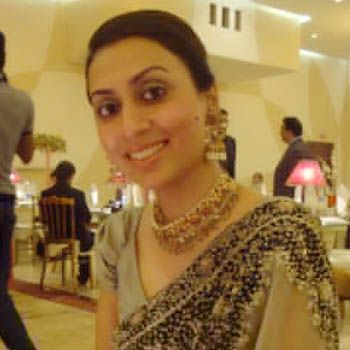Q 1. What is new for your collection this season?
Ans: My working is always evolving and morphing. I think that is what I love about designing. I always want to come up with something new and exciting while staying true to who I am as a designer.
Q 2. What is the focal color for this winter in your new collection?
one thing you can count on is the constant changing color fads in the fashion and beauty world. One month its red, the next burgundy and the next tangerine. The fashion industry has guaranteed that just when we think we figured out the "it" color, its on to the exact opposite end of the color spectrum
Q 3 Can you give us a little glimpse into what we might expect to see?
Ans: This collection has a lot of drama! It’s all about having each look is its own story
Q 3. Considering the competition in the fashion industry today, do you think it’s becoming harder and harder to survive?
I think now is definitely a time when it’s survival of the fittest. For designers who are innovative, creative and committed to their craft, survival is easy and progress is a given. But given the competition, innovation and even more importantly originality is what is needed.
Q 4. What are some of the essential ingredients needed to do well in the fashion industry?
To succeed in today’s fashion environment, one needs the following: a quality product which is delivered regularly and constantly to stockists. The product should be constantly evolving and changing, and be in synch with prevailing trends and fashion.
Q 5. Do you think the average customer cares more about the brand name or the product?
I think the average customer is price conscious, style conscious, trend conscious and the element of brand consciousness comes right at the end.
Q 6. Do you think brand building has become part and parcel of survival in today’s world?
Yes: I think that because of the direction the fashion industry is moving in and the competition in the industry, brand building, PR and marketing activities have become essential for the success of a brand.
Q 7. What role does networking play in helping a new fashion designer succeed in today’s world?
A big role: while the industry has grown remarkably, it’s still a small and close knit clan where the idea of you scratch my back and I scratch yours continues to hold true.
Q 8. Do you think fashion has today become a full fledged business which demands proper business management?
Of course. It’s no longer something to keep bored housewives busy. It’s a full fledged business which requires decent amounts of investments and a proper business plan with a clear cut business strategy.
Q 9. Do you think it’s essential to own a retail store to succeed in today’s fashion climate?
I actually started with a retail store, and later on switched to stocking at multi brand stores. I believe having one’s retail store is definitely an advantage but it’s no longer essential. The mushrooming of multibrand stores means that a designer can stock at multiple locations and get the advantages of having multiple retail outlets.
Q 10. What kind of support is needed to do well in the fashion industry?
Camarderie is the name of the game. Senior designers and council members play a big role in helping younger designers if they are on friendly terms with the latter. Also editors who are "friends" end up being a huge support.
Q 11. Who are the real opinion makers in the industry?
I don’t think there are is any one "opinion maker" in the industry. I think the opinion is divided up between customers, editors, and retailers. Also the right society women wearing one’s clothes is also essential in building public opinion.
Q 12. What do you think is the most effective means of brand building?
I think the best way to build a brand is to have a good brand to start out with! To ensure that your brand is of a high quality and regularly supplied.
Q 13. How difficult is it to stage a comeback considering that you had once launched your label earlier and then closed it?
It’s hard but it wasn’t too difficult because I still had a lot of brand recognition and lots of customers still remembered me.
Q 14. How is your label different now from the way it was before?
I think my label has grown and matured now, and my understanding of the market has also developed greatly.
Q 15. Do you plan to open up another outlet soon?
Possibly! I want to get done with my son’s admissions first and then plan to start another outlet.
Balancing work and motherhood
Q 16. How hard is it to be a working woman?
It’s extremely hard especially if you want to do justice to both your children and your work. For me, my sons are my priority and I don’t let anything and anyone interfere with my mothering duties.
Q17. What do you think is the single most important contributing factor to your success?
I think my product! I have consistently and steadily produced a high end designer product of a high quality and of a reasonable price. This has kept my clients coming back for more.
Q 18. What do you think of the market for pakistani designers abroad?
I think there is a huge market for Pakistani designers in the UAE, UK and other countries but I think the largest market is obviously in Pakistan where almost every woman of a certain class is a potential customer.
Q 19. What drew you to fashion and specifically to starting your own line?
Ans I have always followed fashion but at the same time kept a distance. I couldn’t see myself giving myself over to it completely because I think with good fashion, as with any art, there should be some conflict. And honestly, I’m kind of a sensitive person. It was very hard for me to visualize myself in that world.
I had always thought about making clothes but It wasn’t until I became more interested. I hadn’t planned to do a whole line, but as I went along, the constraints I had given myself — constraints in terms of the materials I was using and the values I wanted to imbue into the clothing – gave me insights into the design process and helped it along.
Q. 20. What advice would you give other brands or designers who are interested in making a step towards designing, where should they start?
Ans I think the first thing is to make it personal for yourself. Maybe it begins with recycling in your office — or finding a way to repurpose your fabric scraps (which I haven’t done yet), or finding one new textile source, and spending some time considering the issues and questions at hand. It’s a lot to take in, but the practical part doesn’t have to happen all at once. There’s no perfect way, you just have to want to do it and you’ll begin to find ways.
Fashion Designer Nida Ali talks to Fashion Central about her latest designing ideas in an exclusive interview.



